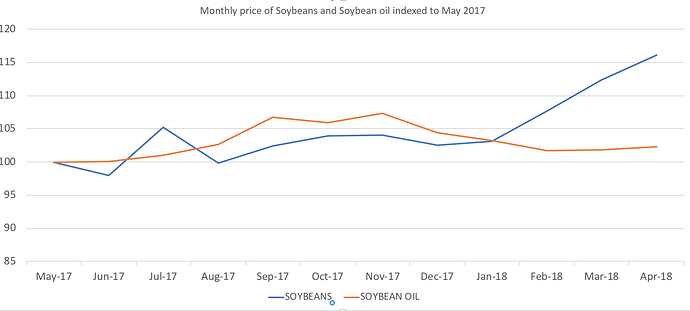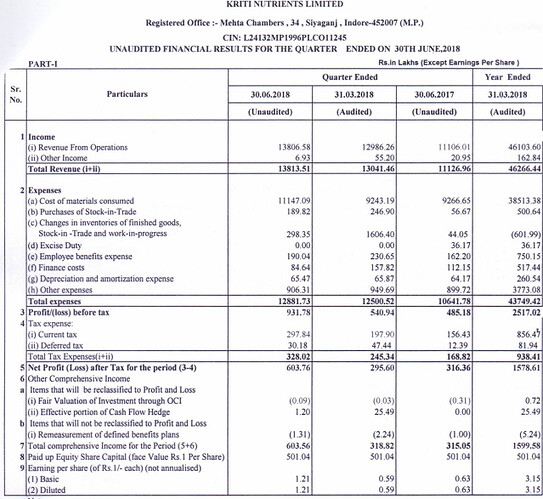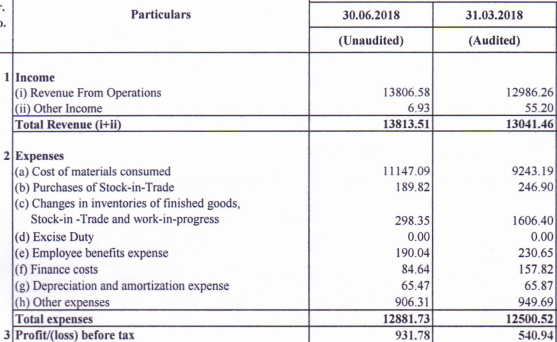Kriti Nutrients Ltd. is engaged in the business of edible oils, lecithin, soya de-oiled cakes, soya floor & other varieties of value added soya products. It is based in Madhya Pradesh, the hub of Soya bean in the country. The Co. which did sales of about 350 crores in 15-16 (274 Crs in 9 months of 16-17 vis-à-vis 250 Crs in 15-16) & profits of 6.29 Crs. The Co. is available at a market cap of about 106 Crs, with an enterprise value of about 116 Crs. Promoter holding is about 66%. 6% of the rest is in physical form.
There are a few interesting triggers at play in this story where further digging is required & I am hoping that we at valuepickr can unravel!
The Co. supplies Lecithin to Nestle (perhaps for its baby food). A smarter mgt. looking for market cap would have splashed this all over the place! I have done some scuttlebutt & confirmed from Nestle that this is true. I have also gathered that Nestle is happy both with Kriti supplies as well as its mgt. However, I am struggling to determine the size of this opportunity. Nestle is known to hand-hold its suppliers & take them to the next level.
The last few years has seen a continuous disparity in soya crushing making exports of soya de-oiled cakes unviable. This has changed in the current year which is seeing a quantum jump in exports. This is largely due to a bumper soya harvest. I am again looking to understand the size of this opportunity. I am also not clear about the kind of margins in export of de-oiled cakes, but will not be surprised if they are better that refining, which has formed the bulk of Kriti’s turnover in the last few years.
Kriti has been refining & selling soya oil under its own brand “Kriti” which is well respected in the markets. A few years ago, it also started marketing sun flower oil under “Kriti” brand, by leveraging its distribution network. This throws up interesting opportunities. Does the Co. have the wherewithal to add a few more products & use its distribution network. That is something the markets would love!
The Kriti mgt. is conservative to the core. While this may have its advantages, but it does make life of us stock pickers very difficult as there are always more questions than answers, but therein lies the opportunity!
It will be nice if other Valuepickrs can contribute in unraveling this story.
Dis: Invested & looking for conviction to add more



